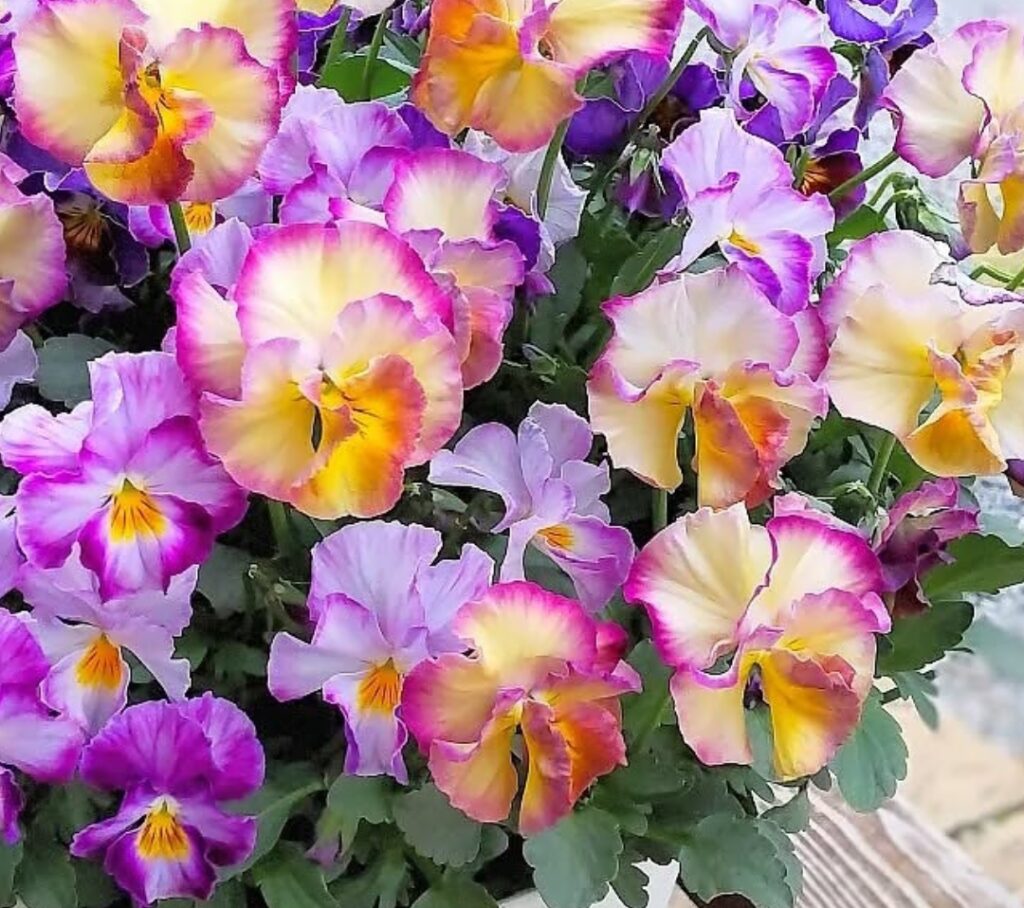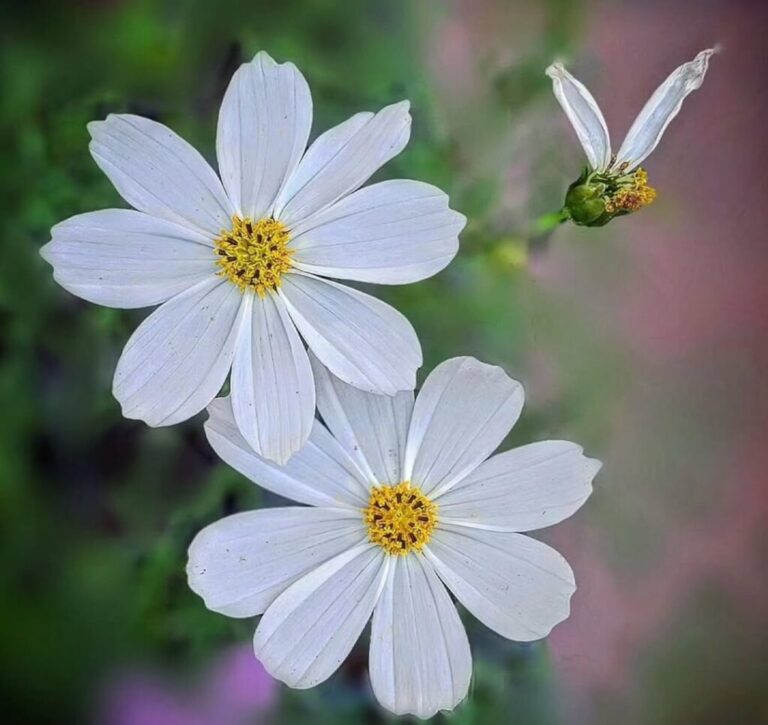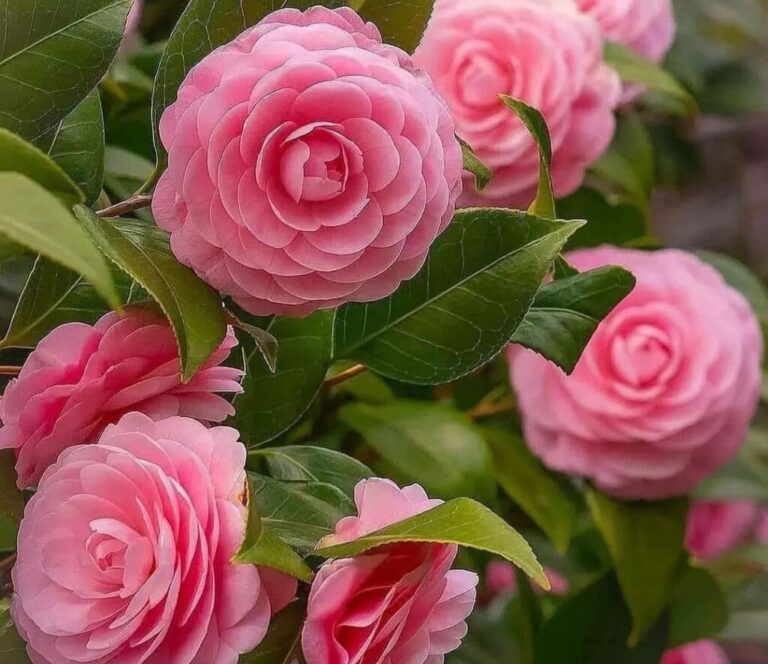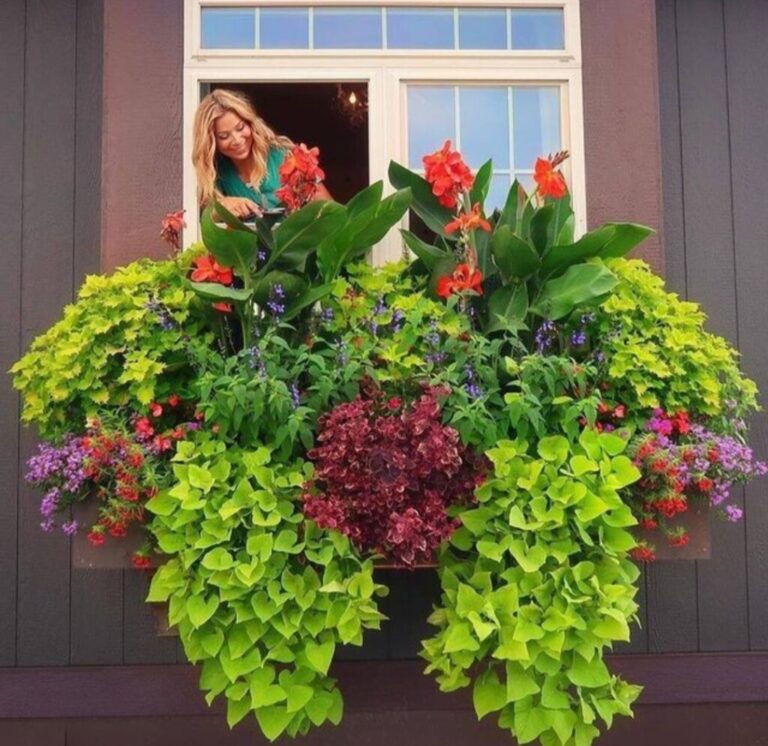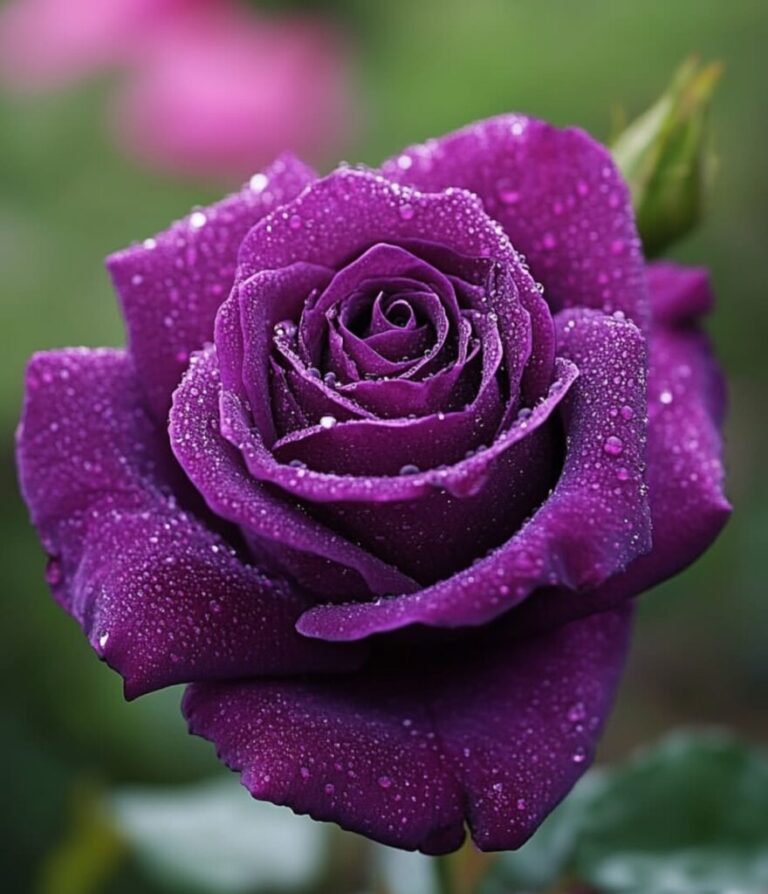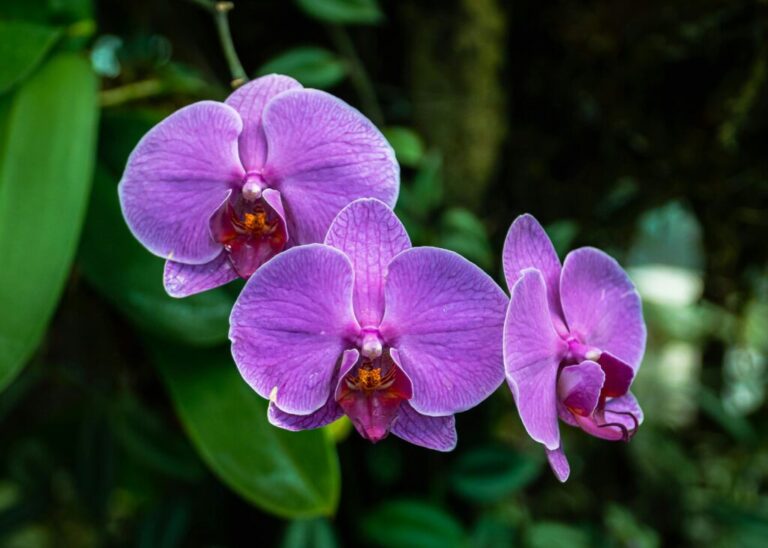Pansy (Viola tricolor var. hortensis) are among the most beloved flowering plants, and for good reason. Their vibrant colors, delicate petals, and unique “faces” make them a favorite choice for gardens, containers, and hanging baskets. Whether you’re looking to add a splash of color to your garden in the cool months of spring and fall or brighten up a dull corner of your yard, pansies are an excellent choice.
One of the best things about pansies is their versatility. These hardy plants can thrive in cooler temperatures, making them perfect for early spring and late fall gardens. They’re also relatively low-maintenance, which makes them a great option for beginners. With the right care, they can bloom for months, providing continuous color and beauty. In this guide, I’ll walk you through everything you need to know about growing and caring for pansies, from planting and watering to troubleshooting common problems.
- 1 1. Introduction to Pansies
- 2 2. Soil Requirements
- 3 3. Light Needs
- 4 4. Best Time to Plant
- 5 5. Proper Spacing
- 6 6. Watering Tips
- 7 7. Fertilizing for More Blooms
- 8 8. Deadheading for Longer Flowering
- 9 9. Trimming and Shaping
- 10 10. Dealing with Pests
- 11 11. Preventing Diseases
- 12 12. Benefits of Mulching
- 13 13. Cold-Hardy Varieties
- 14 14. Managing Heat Stress
- 15 15. Growing in Containers
- 16 16. Starting from Seed
- 17 17. Companion Planting
- 18 18. Compost as a Booster
- 19 19. Harvesting Edible Blooms
- 20 20. Final Thoughts
- 21 FAQS
Seasonal Care Timetable
Place it after fertilizing tips:
| Season | Care Tips |
|---|---|
| Spring | Plant after frost, fertilize every 2–3 weeks, deadhead blooms. |
| Summer | Provide shade in hot climates; pansies may fade in extreme heat. |
| Fall | Plant early for winter blooms, mulch for root protection. |
| Winter | In mild zones, pansies bloom with mulch and light watering |
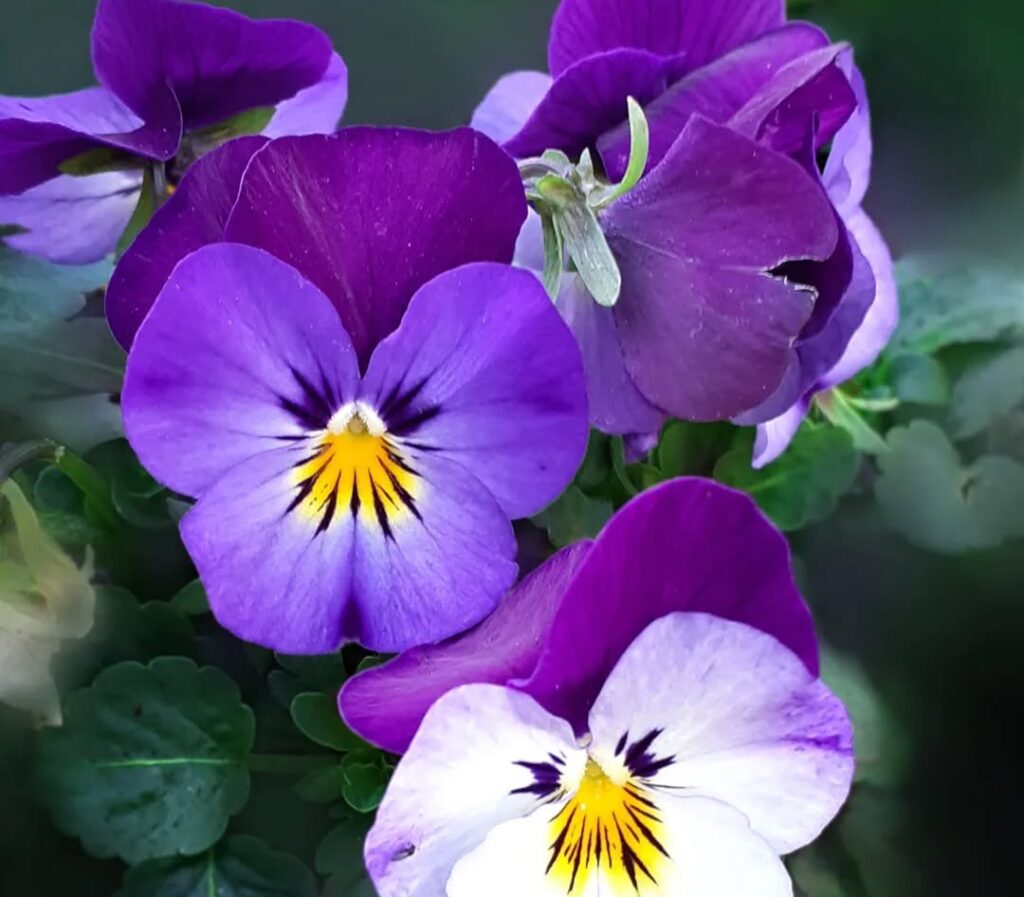
1. Introduction to Pansies
Pansies (Viola × wittrockiana) are beloved for their cheerful, face-like blooms and ability to thrive in cool temperatures. These low-maintenance flowers come in a wide range of colors and are ideal for garden beds, borders, containers, and even hanging baskets, making them a garden favorite for many.
Tip: Choose pansies for seasonal color in spring and fall when most flowers fade.
2. Soil Requirements
Rich, well-draining soil that is rich in organic materials is ideal for pansy growth. Before planting, add aged manure, compost, or leaf mould to enhance the fertility and structure of the soil. For best nutrient uptake and flowering, these flowers need slightly acidic soil (pH 6.0 to 7.0) over neutral soil.
Tip: Test your garden soil’s pH to ensure it’s within the ideal range.
3. Light Needs
For pansy growth to be healthy, sunlight is essential. In colder climates, pansies require full sun; in warmer climes, they require moderate shade, particularly in the afternoon. Insufficient sunshine might cause pansies to sag, bloom less frequently, or suffer from fungal infections like mildew.
Tip: Provide at least 6 hours of morning sunlight for best flowering.
4. Best Time to Plant
Plant pansies in early spring or fall, depending on your local climate. In warm regions (USDA zones 7–10), fall planting is ideal because pansies can bloom all winter. In cooler areas, early spring planting allows flowers to thrive before the heat of summer sets in.
Tip: Avoid planting pansies in midsummer when temperatures are too high.
5. Proper Spacing
Depending on the type, place pansies 6 to 12 inches apart. By allowing air to circulate between plants, this spacing lowers the chance of illness and promotes healthier growth. While pansies that are correctly spaced have room to grow and bloom profusely, those that are overcrowded may develop mildew or root rot.
Tip: Use closer spacing for compact varieties and wider spacing for trailing types.
6. Watering Tips
Water pansies regularly to keep the soil evenly moist, especially during dry spells. Avoid letting the soil completely dry out, but also prevent overwatering, which can lead to root rot. Container-grown pansies may need more frequent watering than those in garden beds.
Tip: Stick your finger in the soil—if it’s dry up to the first knuckle, it’s time to water.
7. Fertilizing for More Blooms
Fertilize pansies with a balanced, water-soluble fertilizer every two to four weeks. For best results, use a bloom-boosting formula high in phosphorus. Avoid over-fertilizing with nitrogen, as it encourages foliage growth at the expense of blooms.
Tip: Look for fertilizer labeled 10-30-20 or similar for flowering plants.
8. Deadheading for Longer Flowering
Deadheading is essential for continuous blooms. Remove spent flowers regularly to encourage the plant to produce new buds instead of setting seeds. This simple task keeps your pansies looking fresh, promotes more flowers, and prevents the plant from becoming leggy or tired-looking.
Tip: Use clean garden scissors or simply pinch off spent blooms with your fingers.
9. Trimming and Shaping
Along with deadheading, clip back any stems that are lanky or strained. This encourages new growth and keeps the plant full and compact. If pansies start to appear floppy or overgrown, a simple trim can restore their vigour and shape.
Tip: Prune stems just above a leaf node for best regrowth.
10. Dealing with Pests
Pansies attract pests like aphids, snails, and slugs, especially in wet or humid conditions. Check leaves regularly and use insecticidal soap, neem oil, or organic slug traps when needed. Keeping your garden clean and weed-free also reduces pest infestations.
Tip: Sprinkle crushed eggshells around plants to deter slugs naturally.
11. Preventing Diseases
Diseases like powdery mildew, downy mildew, and root rot can affect pansies if airflow and drainage are poor. To prevent issues, water early in the day, avoid wetting the foliage, and ensure your soil doesn’t stay soggy. Remove any infected leaves promptly.
Tip: Rotate planting locations each season to reduce disease carryover.
12. Benefits of Mulching
Mulching helps pansies stay healthy by conserving moisture, regulating soil temperature, and preventing weed competition. Use organic mulches like shredded bark, straw, or compost. In colder zones, mulch also provides insulation and protects the roots during frost.
Tip: Apply mulch around, not on top of, the crown of each plant.
13. Cold-Hardy Varieties
Cold-tolerant varieties like ice pansies can survive light frost and even snow. These hardy cultivars offer color in the winter garden and bounce back quickly after freezing nights. In Zone 7 and warmer, pansies often bloom through the winter months.
Tip: Cover pansies with frost cloth during extreme cold spells to extend blooms.
14. Managing Heat Stress
In regions with hot summers, pansies may stop blooming or die back. Remove them once temperatures consistently exceed 70°F (21°C). You can replace them with heat-tolerant flowers and replant fresh pansies when cooler weather returns in fall.
Tip: Save space in your garden by rotating pansies with summer annuals.
15. Growing in Containers
For container gardening, pansies are a great choice. Use high-quality potting mix and pots with drainage holes. Use additional water and fertiliser because containers dry up more quickly. To create a beautiful impression and make upkeep easier, group pots together.
Tip: Elevate pots off the ground to improve drainage and airflow.
16. Starting from Seed
Plant pansy seeds indoors 8–12 weeks before to the date of your last frost. Since seeds require light to sprout, gently plant them in the ground without covering them. Place them in a sunny window or beneath grow lights, keeping them wet.
Tip: Use a heat mat to speed up germination in cooler homes.
17. Companion Planting
Pansies pair beautifully with spring bulbs, ornamental cabbage, violas, and alyssum. These companion plants offer extended color and attract pollinators. Use pansies as edging or fillers to create layered, dynamic flower beds and containers.
Tip: Choose color combinations that contrast for maximum visual impact.
18. Compost as a Booster
Add a thin layer of compost every few weeks to replenish soil nutrients. This improves soil structure and keeps pansies blooming longer. Avoid chemical-heavy amendments that may stress the plants or alter soil pH drastically.
Tip: For a mild nutrient boost, use compost tea or worm castings.
19. Harvesting Edible Blooms
Harvest pansy flowers for edible decorations or crafts. Their petals are safe to eat and can brighten salads, cakes, or ice cubes. Pick blooms in the morning, rinse gently, and store in a cool place if not used immediately.
Tip: Only use organically grown pansies for edible purposes.
20. Final Thoughts
Pansies will repay you with vibrant, cheery blooms throughout the cool seasons if you take the proper care of them. Vibrant flowers can be enjoyed from early spring through late fall or even winter if you concentrate on rich soil, adequate spacing, sunlight, frequent watering, and regular feeding. Have fun gardening!
FAQS
What is a pansy?
pansy is a popular flowering plant known for its bright and colorful blooms. It belongs to the Viola family and thrives in cool weather.
How do I grow pansy flowers from seeds?
To grow pansy flowers from seeds, start them indoors 8-10 weeks before the last frost. Once they develop strong roots, transplant them outdoors in well-draining soil.
What is the best season to plant pansy flowers?
Pansy flowers grow best in early spring or fall when temperatures are cool. They struggle in extreme heat but thrive in mild climates.
Can I grow pansy flowers in pots?
Yes, pansy flowers grow well in pots. Use a well-draining potting mix and place the pot in a location with partial to full sun.
How long do pansy flowers last?
Pansy flowers can bloom for several months, especially in cool weather. In mild climates, they may even survive through winter.
Do pansy flowers need fertilizer?
Yes, feeding pansy plants with a balanced fertilizer every two weeks helps promote continuous blooming. Avoid high-nitrogen fertilizers.
Can pansy flowers survive frost?
Pansy flowers are cold-tolerant and can withstand light frost. However, in extremely cold climates, adding mulch around the base can protect them.
How do I prevent pests from attacking my pansy plants?
Common pests like aphids and slugs may attack pansy plants. Use neem oil or insecticidal soap to keep them away.
Are pansy flowers annual or perennial?
Pansy flowers are technically short-lived perennials but are often grown as annuals due to their preference for cool weather.
How much sunlight do pansy flowers need?
Pansy flowers thrive in full to partial sun. They need at least 4-6 hours of sunlight daily for optimal growth.
Can I grow pansy flowers indoors?
Yes, pansy flowers can be grown indoors in bright, sunny locations. Ensure they receive enough light and proper air circulation.
Why are my pansy flowers wilting?
Pansy flowers wilt due to overwatering, underwatering, or excessive heat. Ensure they have consistent moisture and shade in hot weather.
Do pansy flowers attract pollinators?
Yes, pansy flowers attract bees and butterflies, making them a great addition to pollinator-friendly gardens.
How do I deadhead pansy flowers?
To extend blooming, regularly remove faded pansy flowers by pinching them off at the base. This encourages new blooms to develop.
